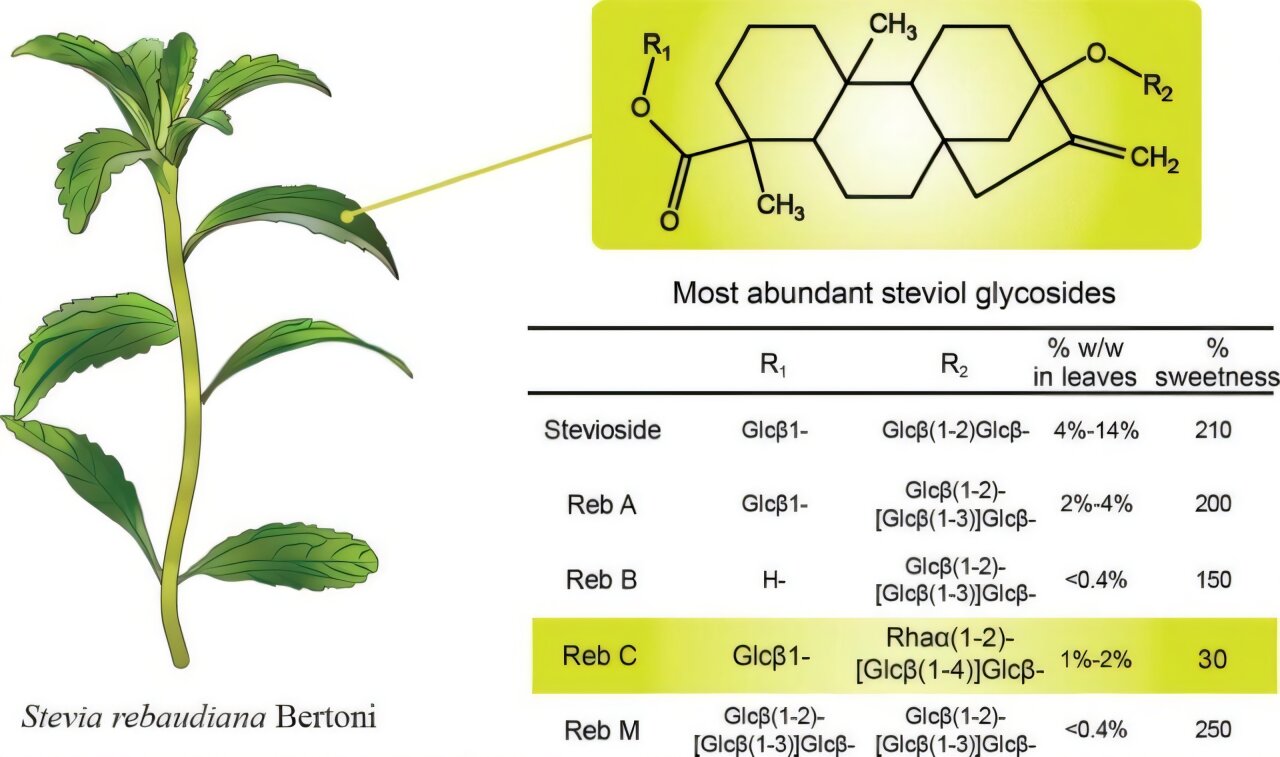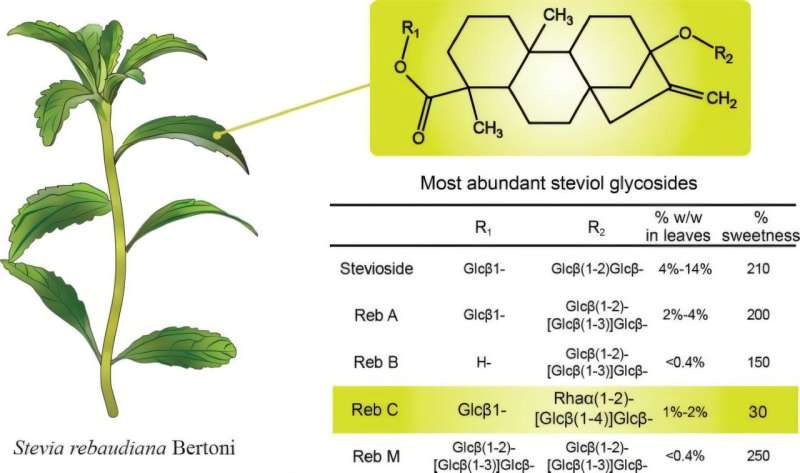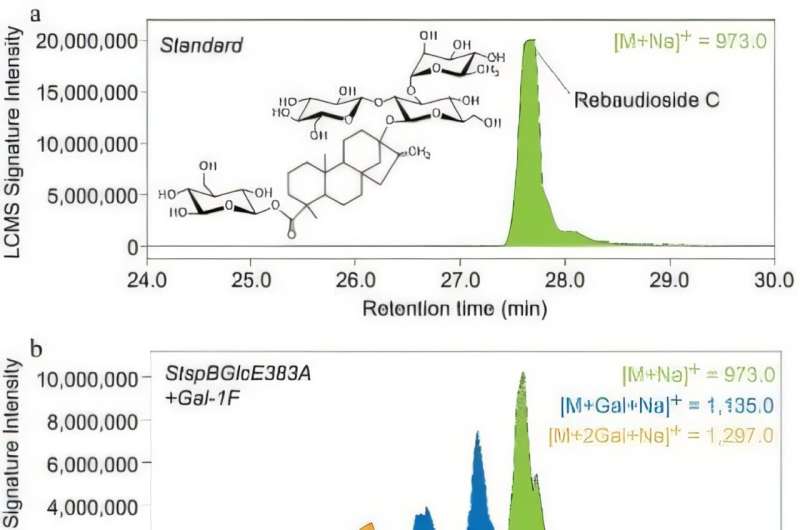

A research team has revealed that Rebaudioside C (Reb C), a key compound in Stevia extracts, can undergo chemoenzymatic modifications to enhance its sweetness. Researchers used engineered glycosynthases to add glucose and galactose moieties to Reb C, paving the way for improved sweetener formulations in food and beverage industries.
Stevia rebaudiana Bertoni, a plant native to South America, is widely known for its sweet-tasting steviol glycosides, which are 100–150 times sweeter than sucrose. These glycosides, including stevioside and Rebaudioside A, have become popular natural sweeteners. However, Rebaudioside C (Reb C), despite being one of the most abundant compounds in Stevia, has a lower sweetness level and a bitter aftertaste.
To improve the sweetness and sensory appeal of Reb C, researchers focused on modifying its glycosylation pattern, a strategy known to enhance the sweetness of related compounds.
A study published in Food Materials Research on 1 March, 2024, expands the repertoire of steviol glycosides available for product formulations, allowing for greater customization of sweetener blends.
In this study, researchers developed a chemoenzymatic approach to enhance Reb C’s sweetness. Researchers focused on the expression and purification of two glycosynthases, StspBGlcE383A and AgtuBGlcE358S, which were evaluated using SDS-PAGE and nickel-chelation affinity chromatography to ensure proper protein expression.
Following this, the team synthesized key intermediates, including 1,2,3,4,6-penta-O-acetyl-glucose and 1,2,3,4,6-penta-O-acetyl-galactose, followed by the synthesis of their 1-fluorinated derivatives. These compounds served as donor substrates for enzymatic glycosylation. The researchers then deprotected these substrates and used them in enzymatic glycosylation reactions targeting Rebaudioside C (Reb C), a steviol glycoside with relatively low sweetness compared to other Rebaudiosides.
The glycosynthases successfully added glucose and galactose moieties to Reb C, with AgtuBGlcE358S proving more efficient, allowing for the addition of up to three galactose or two glucose units. These modifications were confirmed using LC-ESI-MS, which showed the successful attachment of additional sugar units.
The study demonstrated that glycosynthases can effectively glycosylate Reb C, potentially enhancing its sweetness and expanding the range of steviol glycoside analogs. However, further optimization of the process, such as increasing enzyme concentrations, is necessary to improve glycosylation yields and reaction times. This approach could pave the way for the development of novel natural sweeteners with improved taste profiles.

According to the study’s senior researcher, Dr. Josef Voglmeir, “Rebaudioside C has long been overshadowed by other steviol glycosides due to its lower sweetness. By utilizing advanced glycosylation techniques, we can increase its sweetness and improve its sensory properties, offering new possibilities for natural sweeteners.”
This innovative study demonstrates that glycosylation of Rebaudioside C using engineered glycosynthases significantly improves its sweetness and sensory profile. The findings offer promising applications for the development of enhanced Stevia-based sweeteners, with the potential to revolutionize the natural sweetener market.
As researchers continue to optimize the process, the future of low-calorie sweeteners could see the introduction of more versatile and appealing Stevia derivatives.
More information:
Ye-Yang Yu et al, Biocatalytic β-glucosylation/ β-galactosylation of Rebaudioside C by glycosynthases, Food Materials Research (2024). DOI: 10.48130/fmr-0023-0043
Provided by
Chinese Academy of Sciences
Citation:
Chemoenzymatic approach enhances Stevia sweetness through glycosylation of Rebaudioside C (2024, October 21)
retrieved 21 October 2024
from https://phys.org/news/2024-10-chemoenzymatic-approach-stevia-sweetness-glycosylation.html
This document is subject to copyright. Apart from any fair dealing for the purpose of private study or research, no
part may be reproduced without the written permission. The content is provided for information purposes only.